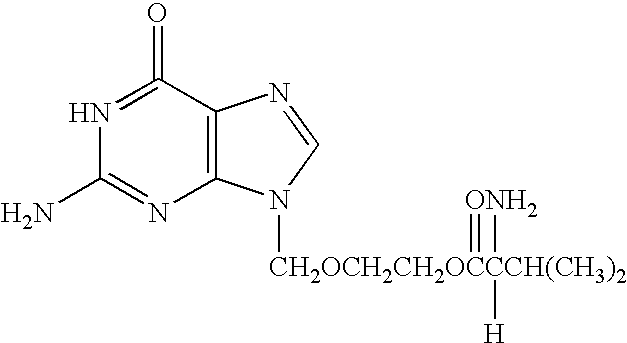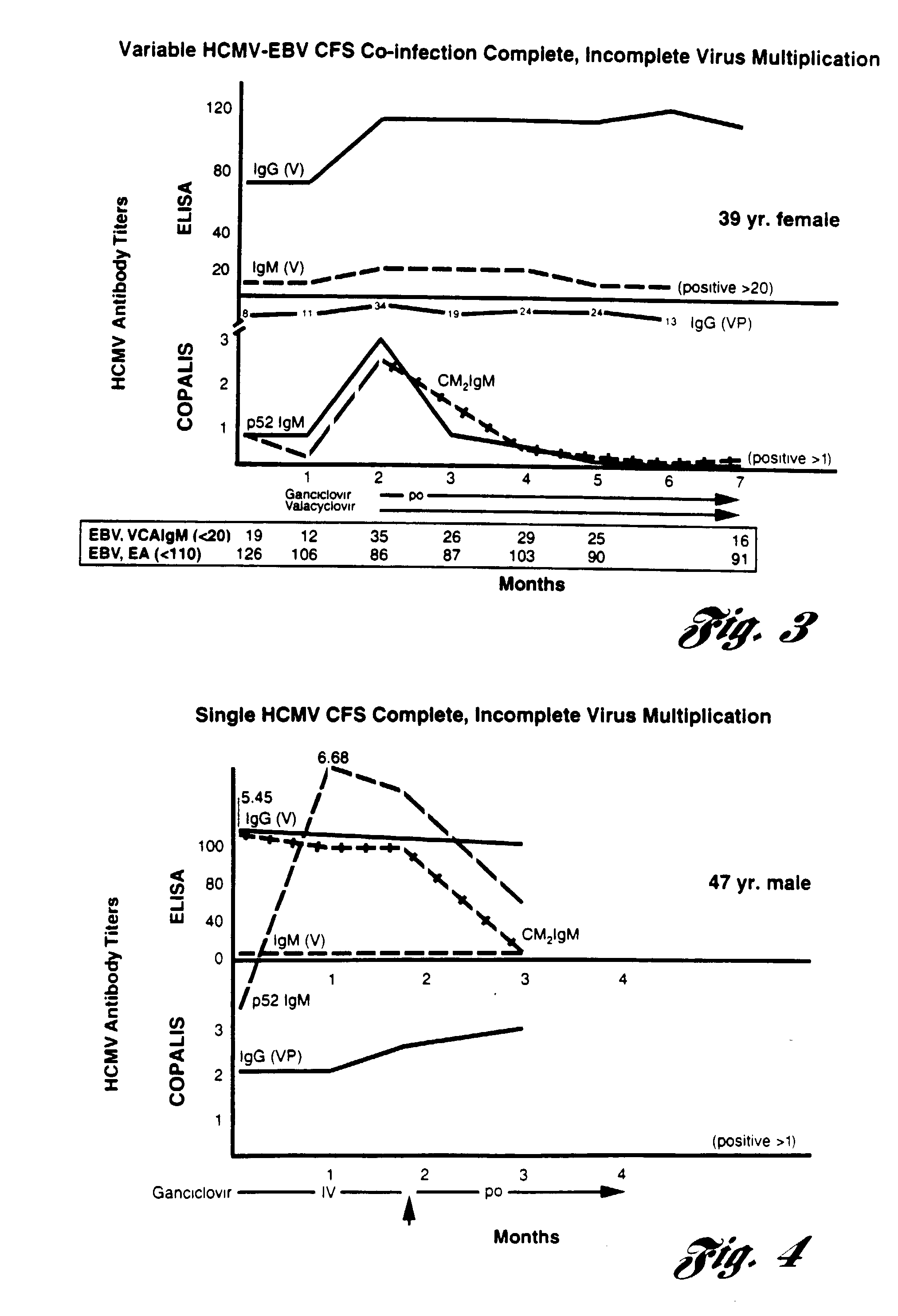Method for diagnosing and alleviating the symptoms of chronic fatigue syndrome
a chronic fatigue syndrome and treatment method technology, applied in the field of diagnosis and treatment of chronic fatigue syndrome, can solve the problems of increasing the number of people afflicted, the symptoms associated with the disorder, and the restriction or lack of ability to perform an activity, so as to achieve the effect of alleviating the symptoms
- Summary
- Abstract
- Description
- Claims
- Application Information
AI Technical Summary
Benefits of technology
Problems solved by technology
Method used
Image
Examples
example 1
[0093] Serum antibody titers to Epstein-Barr virus (EBV) and cytomegalovirus (HCMV) were assayed in a consecutive case series of 98 patients with the chronic fatigue syndrome (CFS) at a first clinic visit to a single referral center in Bimringham, Mich. from 1987-1994. Twenty-four percent of the CFS patients had evidence of a cardiomyopathy documented by the presence of abnormal left ventricular dynamics at stress / rest (MUGA) tests. Antibodies to Epstein-Barr virus (EBV) immunofluorescent total early antigens (EA-D) and cytomegalovirus (HCMV) IgM and IgG enzyme immunoassays (ELISA) were measured. The prevalence of these antibodies was compared to that in a non-CFS group of control persons from the same area. Approximately 50% of CFS and non-CFS patients had concurrent EBV multiplication when tested by the presence of an elevated EA antibody titer to the (EAD) diffuse complex which neutralizes EBV encoded DNA polymerase. Elevated IgM HCMV antibodies were uncommon (<10%) in all groups...
example 2
[0102] EBV-Isolated CFS Patients--Test of Antiviral Treatment. Ten CFS patients, in whom singular Epstein-Barr virus persistent infection was demonstrated, were treated and studied over a six month period. EBV active infection was documented by EBV VCA IgM antibodies and / or EBV EA elevated antibody titers. All of these patients had their energy levels reduced by 50% or more and were partially or entirely non-functional, unable to work or maintain a household. These ten patients had no diseases or complicating conditions which could have accounted for their chronic fatigue syndrome symptoms and they had no prior psychiatric diseases.
[0103] Each patient's functional status was recorded as a statistically validated energy index (EI). At each out-patient visit, subjective evaluation of the patient's functional status was recorded using this energy index. The energy index records the average subjective vitality of the patient in the immediate 14 days prior to this specific out-patient vi...
example 3
[0116] HCMV-Isolated CFS Patients--Test of Antiviral Treatment. A study was conducted to assess the possible efficacy of ganciclovir treatment on a subset of CFS patients with (1) high HCMV IgG ELISA antibody titers; (2) minimal / no serologic evidence of concurrent EBV multiplication; and (3) oscillating ECG abnormalities at Holter monitoring.
[0117] Patients. From March, 1993, through June, 1994, 3 men and 15 women with the mean age of 39.7 plus or minus 7.7 years, with CFS (as defined by the USA, Centers for Diseases Control criteria), were recruited from a single infectious diseases referral center in Birmingham, Mich. Approximately 50 patients with chronic fatigue syndrome were screened for inclusion in this study. The 18 CFS patients studied had a duration of overwhelming fatigue of more than 2 years and with oscillating or repetitively abnormal aberrant T-waves at 24-hour ECG recordings using Holter monitoring. In these 18 CFS patients, baseline standard 12 lead ECG, 2-D echocar...
PUM
| Property | Measurement | Unit |
|---|---|---|
| body weight | aaaaa | aaaaa |
| body weight | aaaaa | aaaaa |
| body weight | aaaaa | aaaaa |
Abstract
Description
Claims
Application Information
 Login to View More
Login to View More - R&D
- Intellectual Property
- Life Sciences
- Materials
- Tech Scout
- Unparalleled Data Quality
- Higher Quality Content
- 60% Fewer Hallucinations
Browse by: Latest US Patents, China's latest patents, Technical Efficacy Thesaurus, Application Domain, Technology Topic, Popular Technical Reports.
© 2025 PatSnap. All rights reserved.Legal|Privacy policy|Modern Slavery Act Transparency Statement|Sitemap|About US| Contact US: help@patsnap.com



